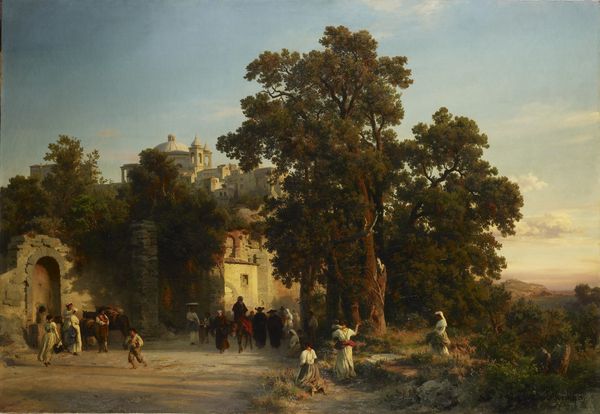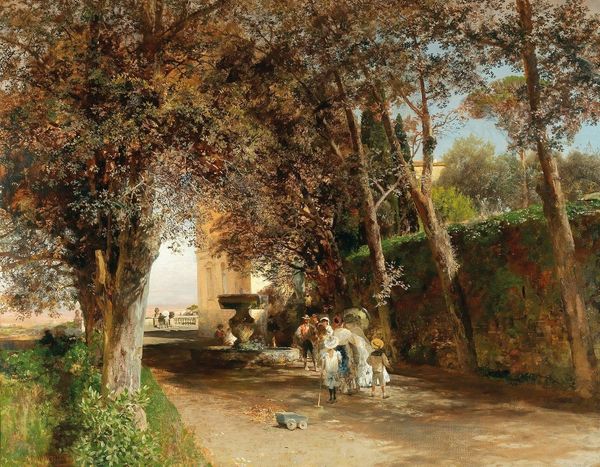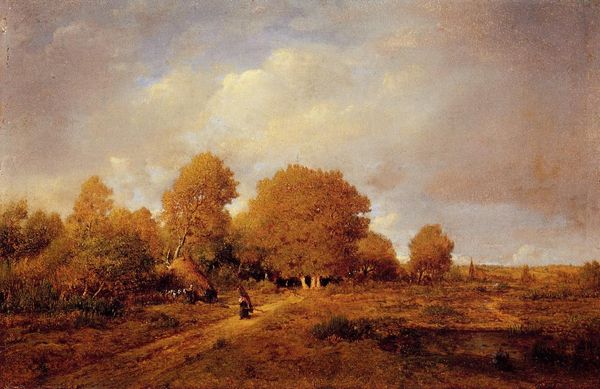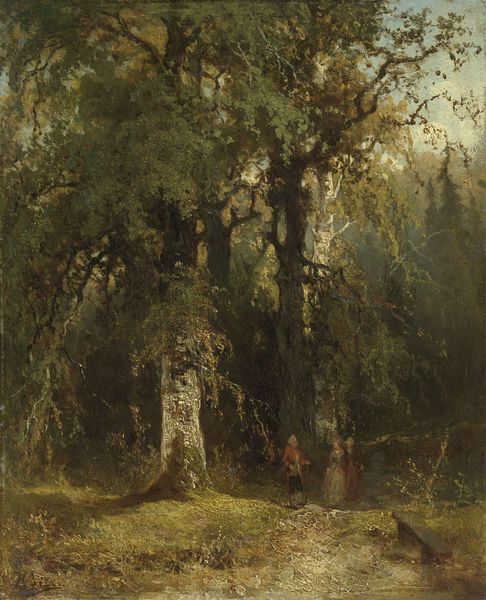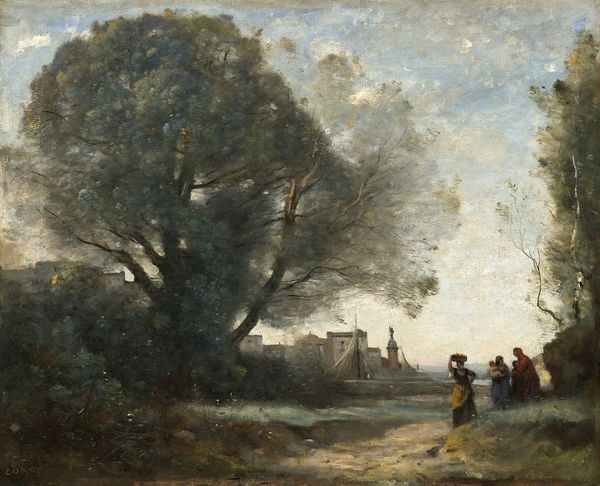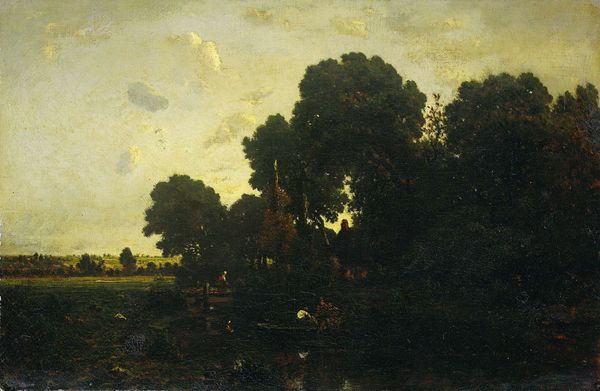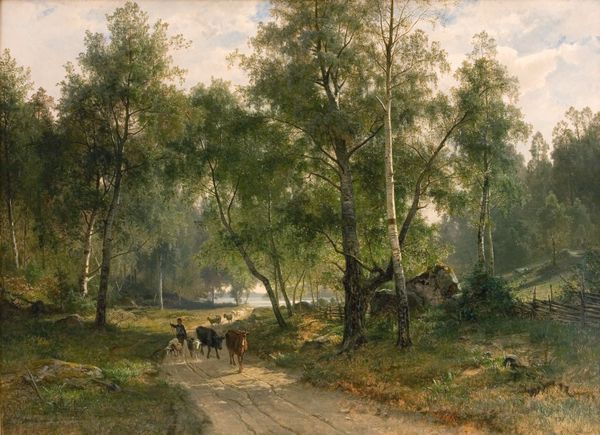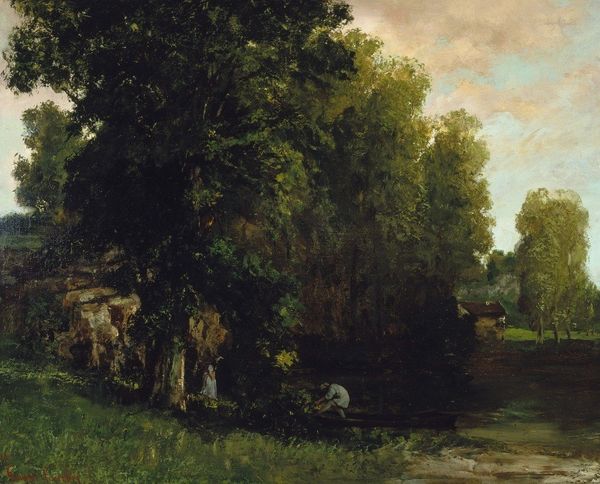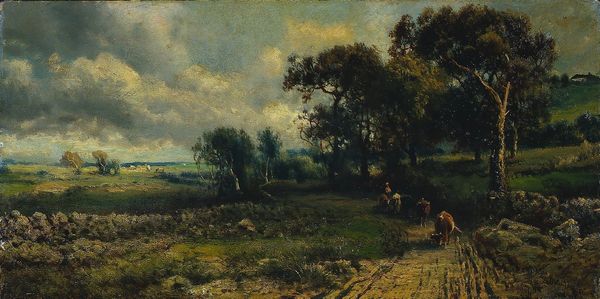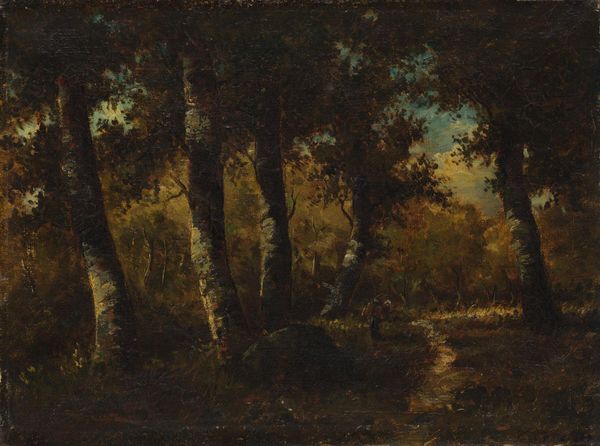
painting, oil-paint
#
painting
#
oil-paint
#
landscape
#
romanticism
#
genre-painting
Copyright: Public domain
Curator: Here we have "Klostergarten", a painting by Oswald Achenbach. The Romantic style brings out an enchanting genre scene. What’s your initial take on this work? Editor: A sort of melancholic peace pervades the canvas, I think. The palette is subdued, almost sepia-toned, with only slight color variations. Two figures, presumably monks, add to the mood. It feels staged, almost. Curator: The figures certainly contribute to the reading, don't they? Their dark habits offset by the building's warm tones, and all of it overshadowed by tall, looming cypress trees...Achenbach may be gesturing towards mortality and spirituality. In Western iconography, the cypress often appears in graveyards as a symbol of grief and remembrance, though it also signifies hope in some traditions. Editor: Interesting! These funereal undertones seem to directly oppose the bright Romantic aesthetics usually tied to the landscape. Is it the sublime turned toward loss, or longing? This cloister, this supposed refuge, seems rather... ominous. The socio-political implications can't be avoided. Is this the past imposing itself on the present, a reminder of entrenched, potentially oppressive, systems? Curator: Yes, perhaps Achenbach invokes that visual tension deliberately. There is always the allure of simpler times and reflection on moral responsibility within a complex world, which art captures by way of Romanticism. However, I can appreciate the interpretation through social consciousness; how the dark past can sometimes cloud perception of our world. It brings to light various historical, sociopolitical tensions, something genre paintings sometimes aim to reflect. Editor: Indeed, the appeal to 'simpler times' often veils systemic injustice, right? Maybe that’s why the figures seem isolated, caught between shadow and fading sunlight. Do they even recognize how complicit their way of life has made them? Curator: It seems that Romanticism becomes this space where ideals meet critical examination. Editor: So well said. Ultimately, the composition forces the viewer to look twice at our relationship with established beliefs, past and present. Curator: Absolutely. In our reading of Achenbach, it serves as an invitation to look critically.
Comments
No comments
Be the first to comment and join the conversation on the ultimate creative platform.
